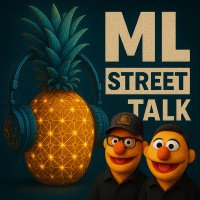
Jürgen Schmidhuber
@schmidhuberai
Invented principles of meta-learning (1987), GANs (1990), Transformers (1991), very deep learning (1991), etc. Our AI is used many billions of times every day.
ID: 1163786515144724485
https://people.idsia.ch/~juergen/most-cited-neural-nets.html 20-08-2019 12:15:46
98 Tweet
148,148K Takipçi
0 Takip Edilen

My dream came true today - an epic day of filming with the original gangster of AI - Jürgen Schmidhuber






















![Jürgen Schmidhuber (@schmidhuberai) on Twitter photo What can we learn from history? The FACTS: a novel Structured State-Space Model with a factored, thinking memory [1]. Great for forecasting, video modeling, autonomous systems, at #ICLR2025. Fast, robust, parallelisable.
[1] Li Nanbo, Firas Laakom, Yucheng Xu, Wenyi Wang, J. What can we learn from history? The FACTS: a novel Structured State-Space Model with a factored, thinking memory [1]. Great for forecasting, video modeling, autonomous systems, at #ICLR2025. Fast, robust, parallelisable.
[1] Li Nanbo, Firas Laakom, Yucheng Xu, Wenyi Wang, J.](https://pbs.twimg.com/media/GnnlkguaMAIYtWu.jpg)
![Jürgen Schmidhuber (@schmidhuberai) on Twitter photo What if AI could write creative stories & insightful #DeepResearch reports like an expert? Our heterogeneous recursive planning [1] enables this via adaptive subgoals [2] & dynamic execution. Agents dynamically replan & weave retrieval, reasoning, & composition mid-flow. Explore What if AI could write creative stories & insightful #DeepResearch reports like an expert? Our heterogeneous recursive planning [1] enables this via adaptive subgoals [2] & dynamic execution. Agents dynamically replan & weave retrieval, reasoning, & composition mid-flow. Explore](https://pbs.twimg.com/media/GnswCFJbMAAoY3q.jpg)
![Jürgen Schmidhuber (@schmidhuberai) on Twitter photo My first work on metalearning or learning to learn came out in 1987 [1][2]. Back then nobody was interested. Today, compute is 10 million times cheaper, and metalearning is a hot topic 🙂 It’s fitting that my 100th journal publication [100] is about metalearning, too.
[100] My first work on metalearning or learning to learn came out in 1987 [1][2]. Back then nobody was interested. Today, compute is 10 million times cheaper, and metalearning is a hot topic 🙂 It’s fitting that my 100th journal publication [100] is about metalearning, too.
[100]](https://pbs.twimg.com/media/GoqWMjKXMAA6KT6.jpg)
![Jürgen Schmidhuber (@schmidhuberai) on Twitter photo Smart (but not necessarily supersmart) robots that can learn to operate the tools & machines operated by humans can also build (and repair) more of their own kind: the "ultimate form of scaling" [1-5]. Life-like, self-replicating, self-improving hardware will change everything. Smart (but not necessarily supersmart) robots that can learn to operate the tools & machines operated by humans can also build (and repair) more of their own kind: the "ultimate form of scaling" [1-5]. Life-like, self-replicating, self-improving hardware will change everything.](https://pbs.twimg.com/media/GsC2VhSXQAApP8S.png)
